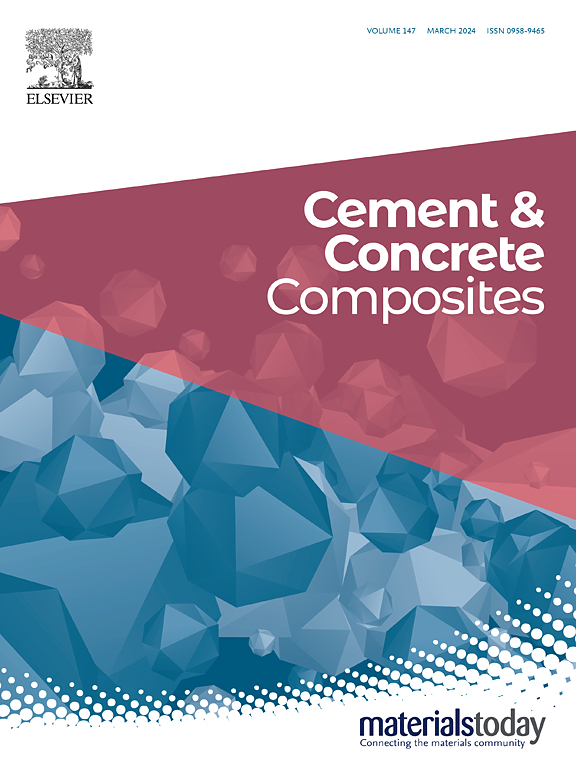Self-healing assessment of fibre reinforced cementitious mortars developed for 3D concrete printing: recovery of mechanical performance and self-sealing capability
IF 10.8
1区 工程技术
Q1 CONSTRUCTION & BUILDING TECHNOLOGY
引用次数: 0
Abstract
This study investigated the self-healing capability of two fibre reinforced cementitious mortars, with and without crystalline admixture, which were specifically developed for 3D concrete printing. Four-point bending tests were carried out to assess the recovery of mechanical properties, focusing on resistance and stiffness recovery indexes. Two residual crack opening displacements of 50 μm and 500 μm were imposed on the different series of the specimens to compare their influence on the self-healing capability. Crack self-sealing efficiency was investigated by capturing crack images using a digital microscope. In addition to the assessment of the self-healing efficiency over time, the relationship between mechanical recovery indexes and average crack widths, as well as the relationship between different recovery indexes were also studied. The results showed a higher recovery performance for mixtures with crystalline admixture in the case of stiffness recovery and self-sealing capabilities. Moreover, the results showed a decreased on the healing efficiency with the increase of the crack widths.
用于3D混凝土打印的纤维增强胶凝砂浆的自修复评估:机械性能和自密封能力的恢复
本研究研究了两种纤维增强胶凝砂浆的自修复能力,其中有和没有结晶外加剂,这是专门为3D混凝土打印开发的。进行四点弯曲试验,以评估力学性能的恢复,重点关注阻力和刚度恢复指标。在不同系列试件上施加50 μm和500 μm的残余裂纹张开位移,比较其对自愈能力的影响。利用数码显微镜采集裂纹图像,研究了裂纹的自封闭效率。除了评估自愈效率随时间的变化外,还研究了力学恢复指标与平均裂缝宽度的关系,以及不同恢复指标之间的关系。结果表明,在刚度恢复和自密封能力方面,含晶态外加剂的混合物具有更高的恢复性能。随着裂纹宽度的增大,裂纹的愈合效率逐渐降低。
本文章由计算机程序翻译,如有差异,请以英文原文为准。
求助全文
约1分钟内获得全文
求助全文
来源期刊

Cement & concrete composites
工程技术-材料科学:复合
CiteScore
18.70
自引率
11.40%
发文量
459
审稿时长
65 days
期刊介绍:
Cement & concrete composites focuses on advancements in cement-concrete composite technology and the production, use, and performance of cement-based construction materials. It covers a wide range of materials, including fiber-reinforced composites, polymer composites, ferrocement, and those incorporating special aggregates or waste materials. Major themes include microstructure, material properties, testing, durability, mechanics, modeling, design, fabrication, and practical applications. The journal welcomes papers on structural behavior, field studies, repair and maintenance, serviceability, and sustainability. It aims to enhance understanding, provide a platform for unconventional materials, promote low-cost energy-saving materials, and bridge the gap between materials science, engineering, and construction. Special issues on emerging topics are also published to encourage collaboration between materials scientists, engineers, designers, and fabricators.
 求助内容:
求助内容: 应助结果提醒方式:
应助结果提醒方式:


